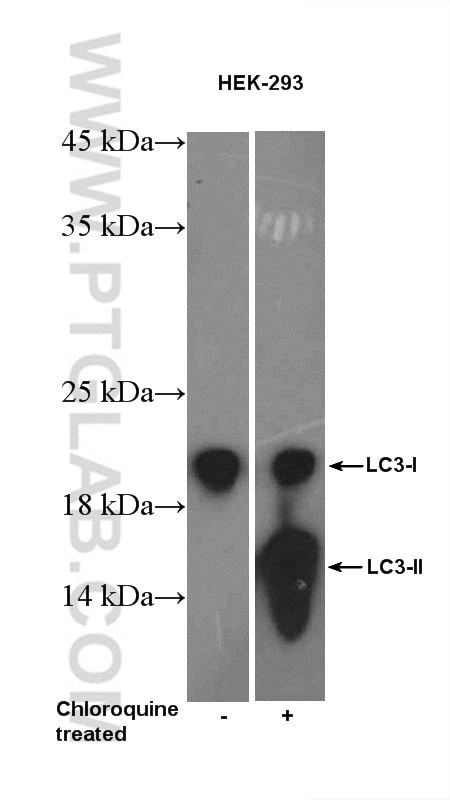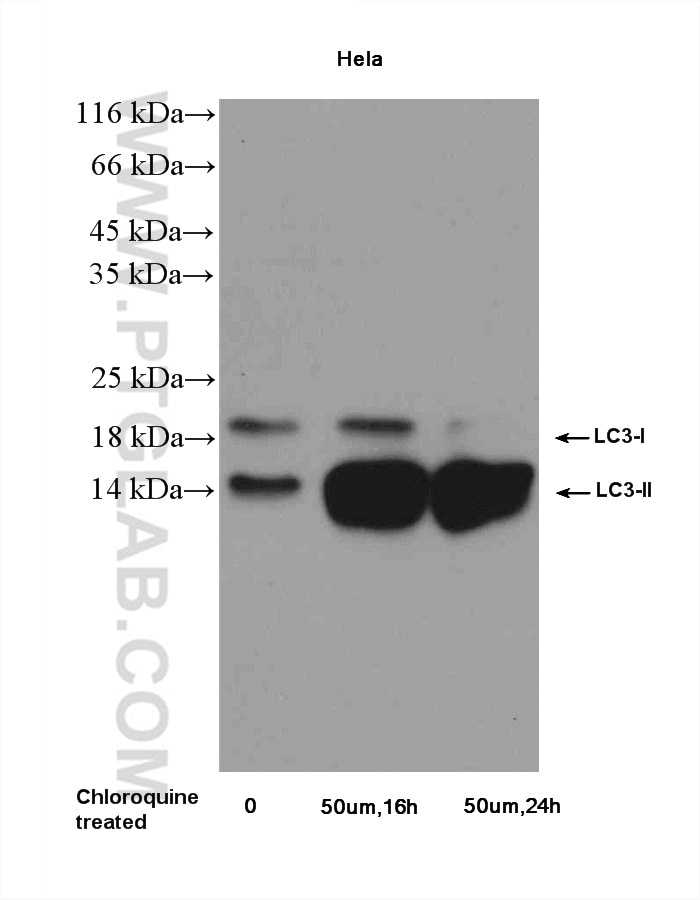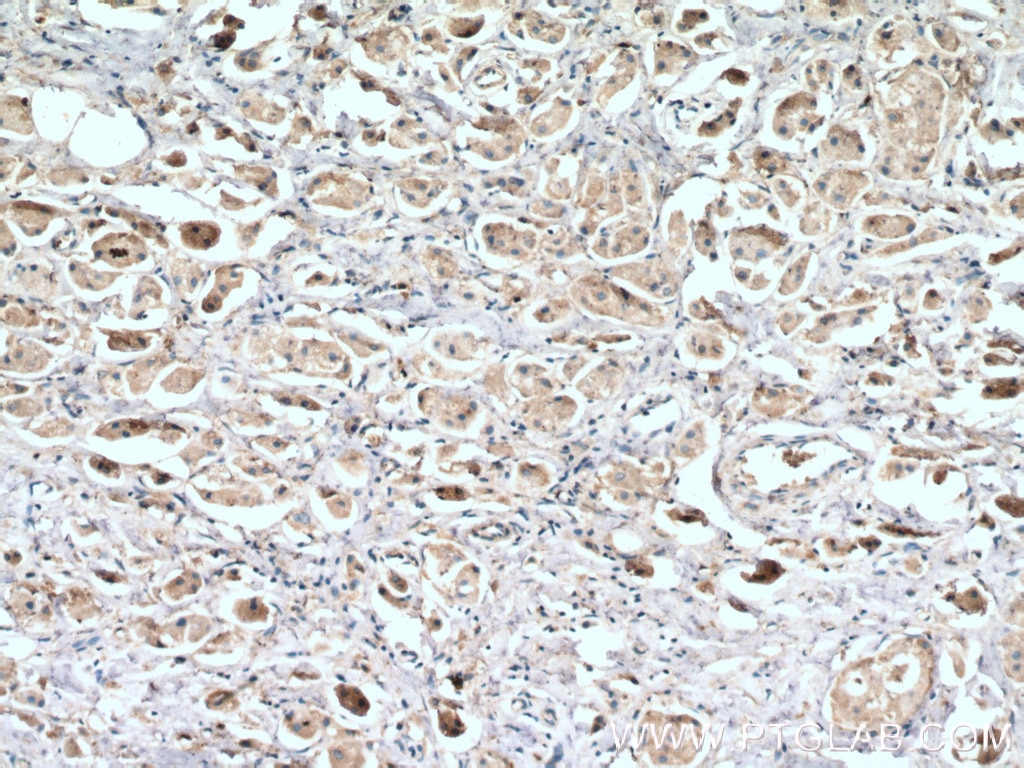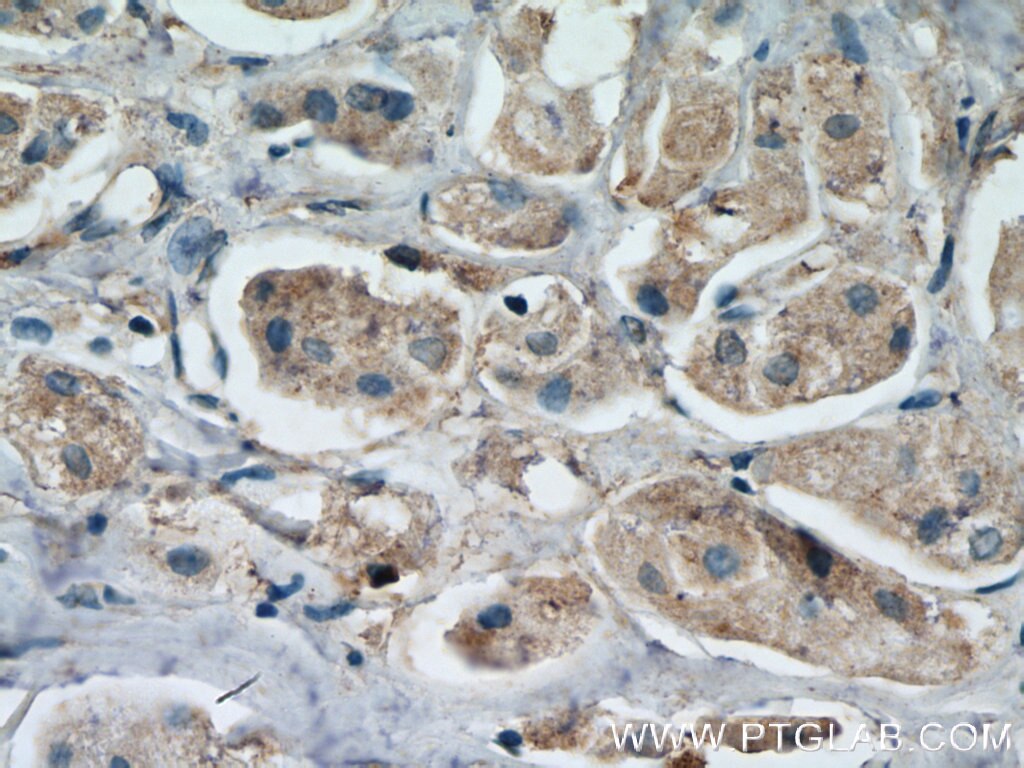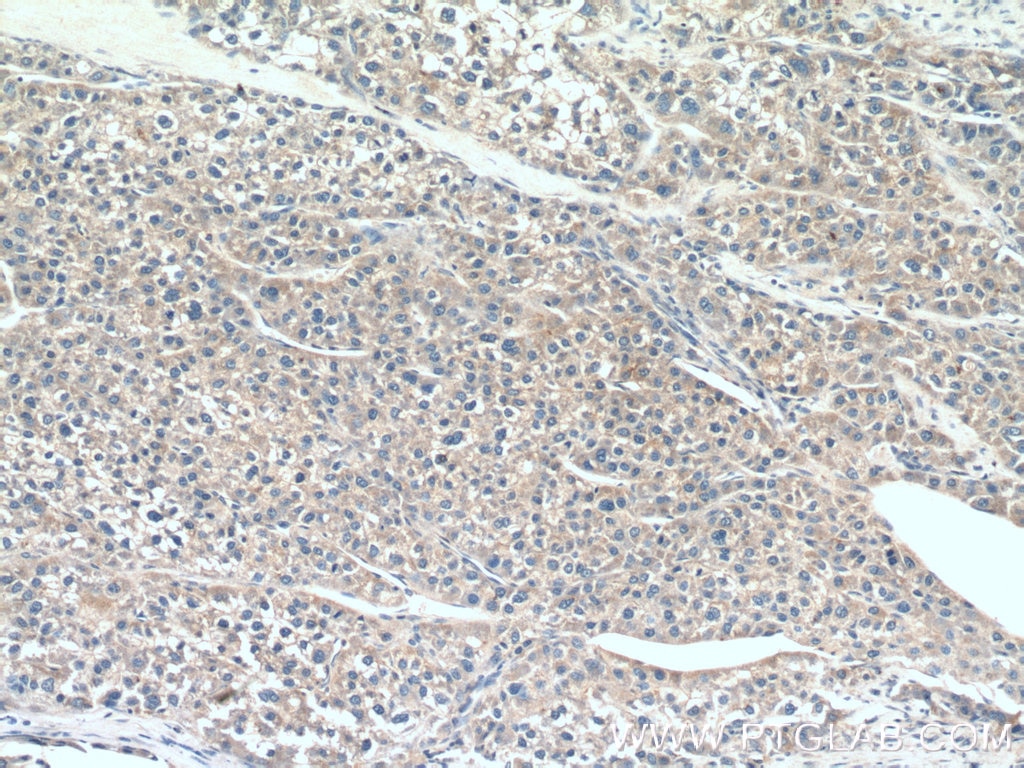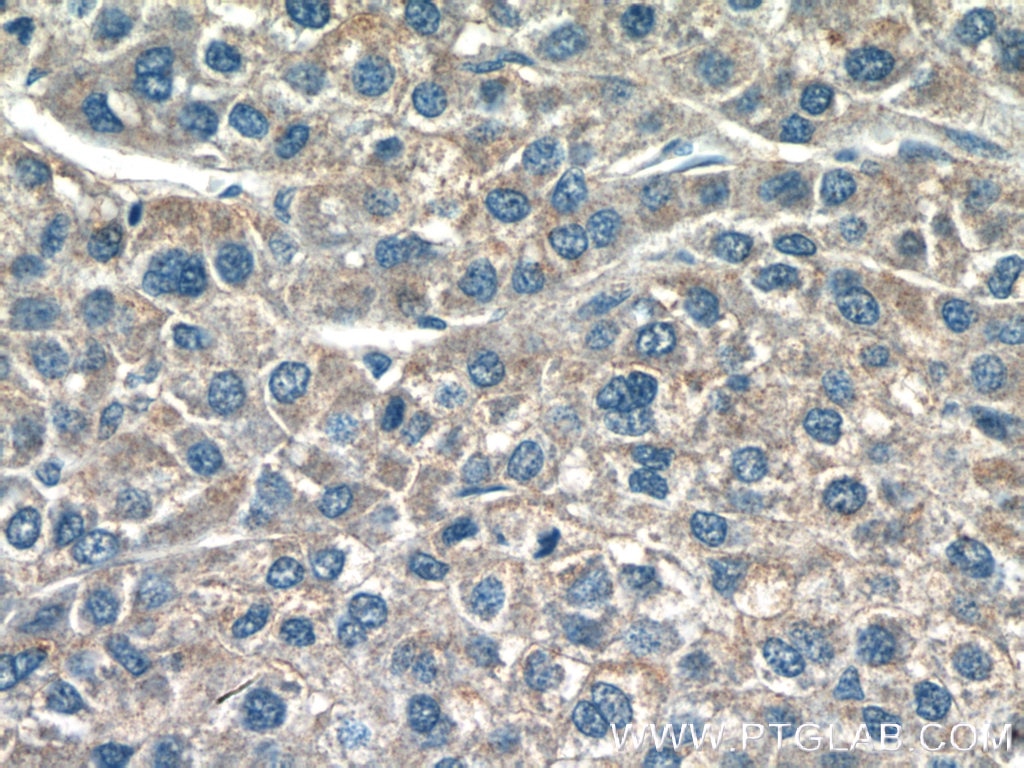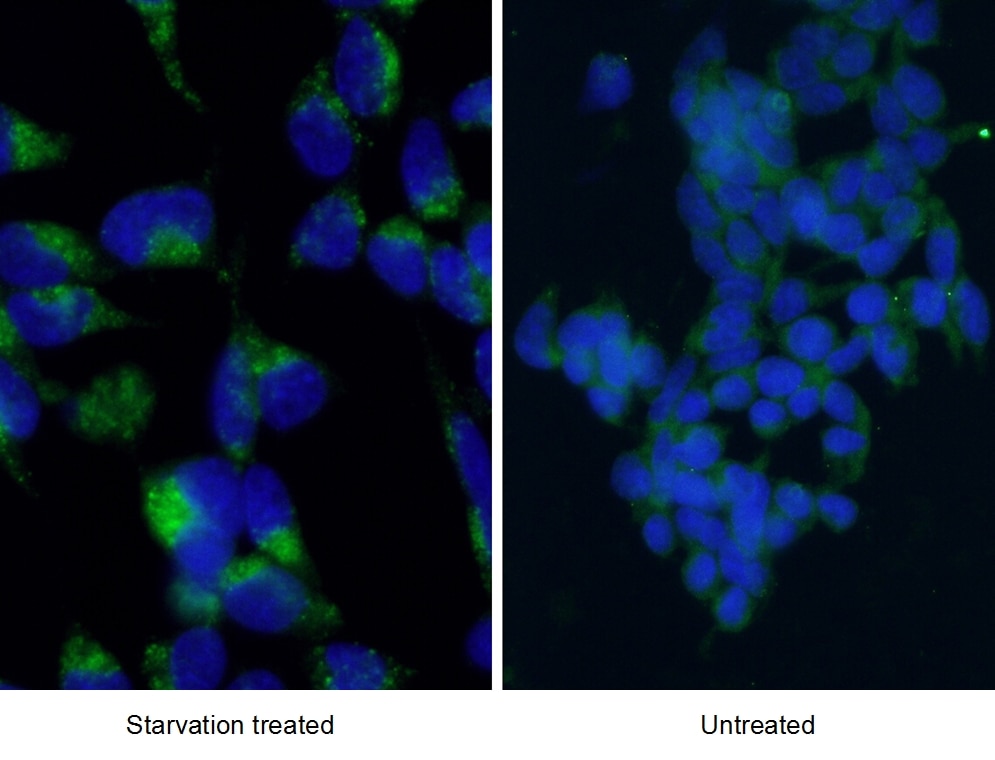Anticorps Polyclonal de lapin anti-LC3
LC3 Polyclonal Antibody for WB, IF, IHC, ELISA
Hôte / Isotype
Lapin / IgG
Réactivité testée
Humain, poisson-zèbre, rat, souris et plus (2)
Applications
WB, IHC, IF/ICC, ELISA
Conjugaison
Non conjugué
N° de cat : 12135-1-AP
Synonymes
Galerie de données de validation
Applications testées
| Résultats positifs en WB | cellules HEK-293 traitées à la chloroquine, cellules HeLa traitées à la chloroquine |
| Résultats positifs en IHC | tissu de cancer du sein humain, tissu de cancer du foie humain il est suggéré de démasquer l'antigène avec un tampon de TE buffer pH 9.0; (*) À défaut, 'le démasquage de l'antigène peut être 'effectué avec un tampon citrate pH 6,0. |
| Résultats positifs en IF/ICC | cellules HEK-293 traitées par déprivation, |
Dilution recommandée
| Application | Dilution |
|---|---|
| Western Blot (WB) | WB : 1:500-1:2000 |
| Immunohistochimie (IHC) | IHC : 1:50-1:500 |
| Immunofluorescence (IF)/ICC | IF/ICC : 1:50-1:500 |
| It is recommended that this reagent should be titrated in each testing system to obtain optimal results. | |
| Sample-dependent, check data in validation data gallery | |
Applications publiées
| WB | See 60 publications below |
| IHC | See 7 publications below |
| IF | See 22 publications below |
Informations sur le produit
12135-1-AP cible LC3 dans les applications de WB, IHC, IF/ICC, ELISA et montre une réactivité avec des échantillons Humain, poisson-zèbre, rat, souris
| Réactivité | Humain, poisson-zèbre, rat, souris |
| Réactivité citée | rat, Humain, porc, poulet, souris |
| Hôte / Isotype | Lapin / IgG |
| Clonalité | Polyclonal |
| Type | Anticorps |
| Immunogène | LC3 Protéine recombinante Ag2781 |
| Nom complet | microtubule-associated protein 1 light chain 3 alpha |
| Masse moléculaire calculée | 121 aa, 14 kDa |
| Numéro d’acquisition GenBank | BC015810 |
| Symbole du gène | LC3 |
| Identification du gène (NCBI) | 84557 |
| Conjugaison | Non conjugué |
| Forme | Liquide |
| Méthode de purification | Purification par affinité contre l'antigène |
| Tampon de stockage | PBS with 0.02% sodium azide and 50% glycerol |
| Conditions de stockage | Stocker à -20°C. Stable pendant un an après l'expédition. L'aliquotage n'est pas nécessaire pour le stockage à -20oC Les 20ul contiennent 0,1% de BSA. |
Informations générales
LC3, also known as microtubule-associated protein 1 light chain 3 (MAP1LC3), is a mammalian homolog of the yeast Atg8p (autophagy-related 8 protein) that is involved in autophagy process. Three isoforms of LC3 exist as LC3A,LC3B, and LC3C. LC3 is first synthesized as pro-LC3, and undergoes C-terminal cleavage to yield a cytosolic precursor known as LC3-I. During autophagy LC3-I is subsequently conjugated to PE lipid as lipidated form: LC3-II. The lipidated form migrates faster on SDS-PAGE gel. The increased the level of LC3-II has been widely used as autophagy marker. This antibody recognizes both LC3-I (18-20 kDa) and LC3-II (14-16 kDa).
Protocole
| Product Specific Protocols | |
|---|---|
| WB protocol for LC3 antibody 12135-1-AP | Download protocol |
| IHC protocol for LC3 antibody 12135-1-AP | Download protocol |
| IF protocol for LC3 antibody 12135-1-AP | Download protocol |
| Standard Protocols | |
|---|---|
| Click here to view our Standard Protocols |
Publications
| Species | Application | Title |
|---|---|---|
Cell Death Differ ATG4D is the main ATG8 delipidating enzyme in mammalian cells and protects against cerebellar neurodegeneration. | ||
Oxid Med Cell Longev Enhanced p62-NRF2 Feedback Loop due to Impaired Autophagic Flux Contributes to Arsenic-Induced Malignant Transformation of Human Keratinocytes. |
